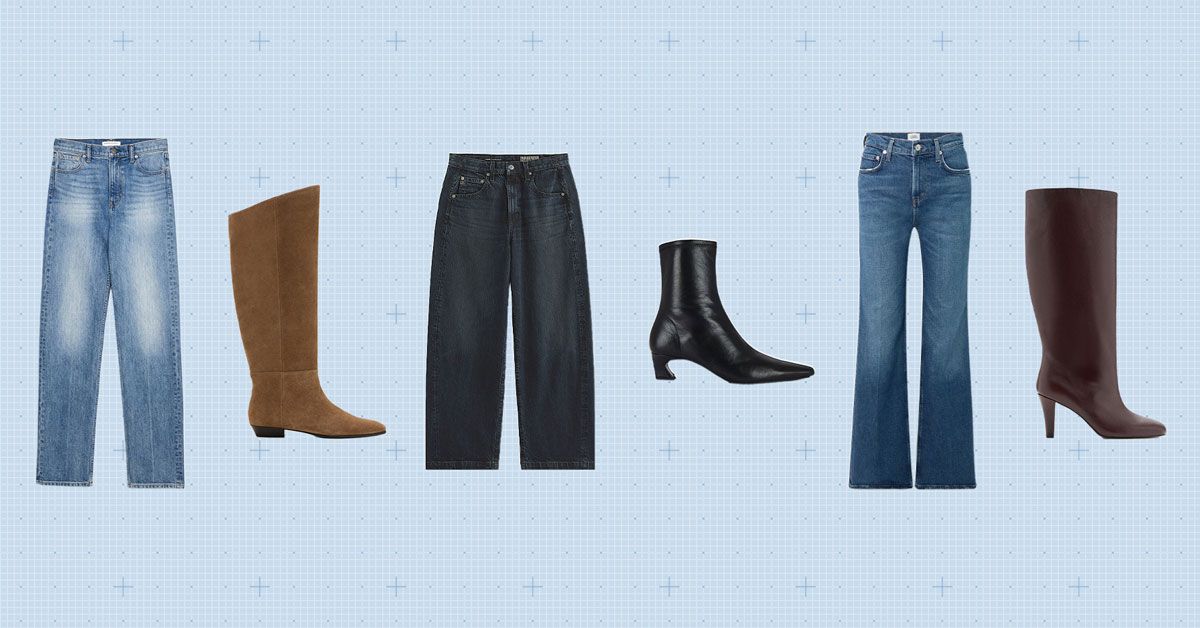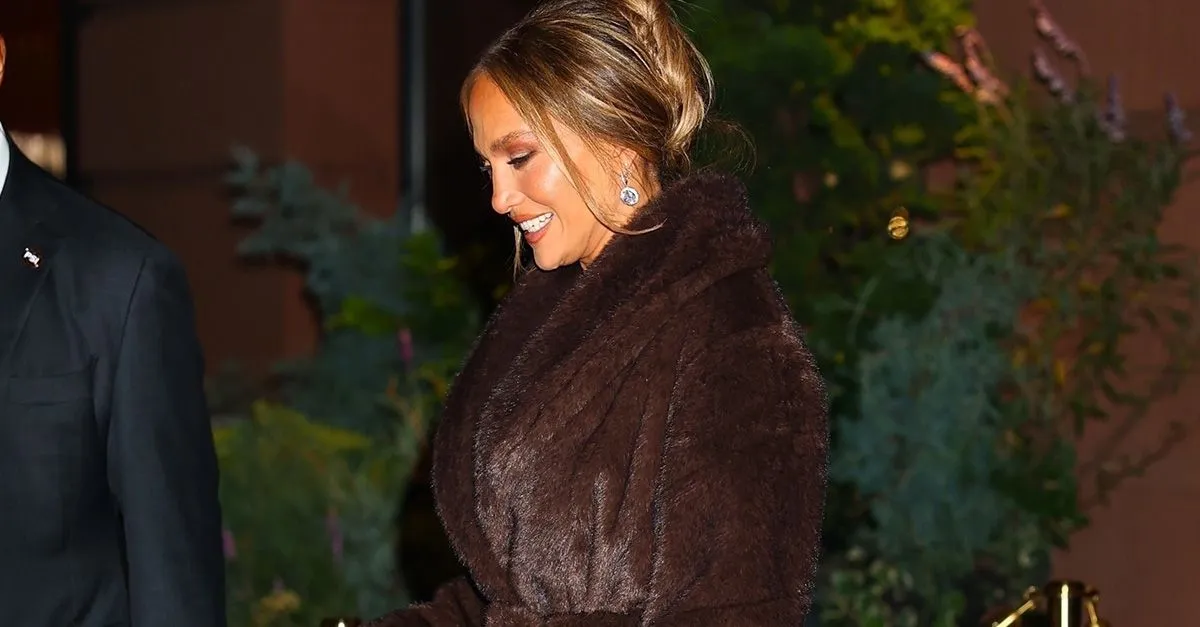Sports photography captures the thrilling moments of action, showcasing the power, speed, and emotion in various athletic events. However, behind every striking sports photo is a well-chosen camera that plays a crucial role in freezing those moments in time.
Capturing the thrilling moments in sports photography isn't just about skill – it's also about having the best camera for the job. In this discussion, we'll explore why choosing the right camera is super important for sports photography.
We'll see how technology has changed the game, allowing us to capture those exciting moments in sports through the lens of a camera. Let's jump into the cool world where technology and sports collide, making the way we capture these awesome moments even more amazing.
Key Considerations for Sports Photography Cameras
High Frame Rate
1.
Why a High Frame Rate Matters:
Capturing the essence of fast-paced sports requires a camera with a high frame rate. Frame rate refers to the number of images a camera can capture per second. In sports photography, where split-second moments define the action, a higher frame rate ensures that no crucial detail is missed. It enables photographers to freeze rapid movements, such as a basketball player's jump shot or a soccer player's goal, with precision and clarity.
2. Examples of Popular Cameras with High Frame Rates:
- Canon EOS-1D X Mark III: Boasting an impressive 20 frames per second (fps), this camera is a favorite among sports photographers for its ability to capture rapid sequences flawlessly.
- Nikon D6: Recognized for its exceptional performance, the Nikon D6 offers a high frame rate of 14 fps, ensuring that photographers can capture every dynamic moment in a sporting event.
- Sony Alpha a9 II: With a remarkable 20 fps continuous shooting speed, the Sony Alpha a9 II is a top choice for those seeking a camera that excels in fast-action scenarios, making it ideal for sports photography.
Autofocus Performance
1.The Sign
ificance of Fast and Accurate Autofocus in Sports Photography:
In sports photography, where the action unfolds rapidly, the role of a camera's autofocus cannot be overstated. Fast and precise autofocus is a game-changer, ensuring that pivotal moments are captured with sharpness and clarity, even in challenging conditions. Whether it's a soccer player's lightning-quick maneuver or a gymnast's intricate routine, dependable autofocus enables photographers to freeze these fleeting moments, creating images that vividly narrate the intensity of the sporting event.
2. Cameras Known for Exceptional Autofocus Capabilities:
- ,Sony A9 III: Acknowledged for its advanced Real-time Eye AF and Real-time Tracking capabilities, the Sony A9 III stands out in providing rapid and accurate autofocus, making it an excellent choice for sports photographers who demand precision in capturing moving subjects.
- Nikon Z6 II: Featuring a robust 273-point hybrid autofocus system, the Nikon Z6 II excels in swiftly tracking and locking onto subjects, even in challenging lighting conditions. This makes it a reliable companion for photographers navigating the dynamic environment of sports events.
- Canon EOS R5: With its Dual Pixel CMOS AF II system, the Canon EOS R5 offers exceptional autofocus speed and accuracy.
It is well-suited for sports photographers seeking a camera that can consistently deliver sharp images in fast-paced scenarios.
Low Light Performance
1. Importance of Good Low-Light Performance for Indoor or Evening Sports Events:
In the world of sports photography, not all action unfolds under the bright sun. Many events, especially indoor competitions or evening matches, are conducted in challenging low-light conditions.
The ability of a camera to perform well in such situations becomes crucial. Good low-light performance ensures that photographers can capture the intensity of the game with clarity, revealing details even in dimly lit arenas.
Whether it's a basketball game under arena lights or a soccer match as the sun sets, a camera's proficiency in low-light conditions becomes a decisive factor in producing striking images.
2. Cameras with Impressive Low-Light Capabilities:
- Sony A7S III: Renowned for its exceptional low-light sensitivity, the Sony A7S III is designed for capturing high-quality images in challenging lighting situations. Its impressive ISO range and advanced sensor technology make it a go-to choice for photographers navigating low-light environments.
- Nikon D850: While excelling in high-resolution imaging, the Nikon D850 also performs admirably in low-light conditions. With its wide ISO range and excellent noise reduction capabilities, it offers sports photographers the flexibility needed to capture action in various lighting scenarios.
- ,Canon EOS 5D Mark IV: Known for its versatile performance, the Canon EOS 5D Mark IV delivers impressive low-light capabilities. Its advanced sensor technology and image processing ensure that photographers can confidently shoot in dimly lit environments, making it a reliable choice for sports events held in the evening or indoors.
Durability and Weather Resistance
1.Discussion on th
e Need for a Robust and Weather-Sealed Camera for Outdoor Sports:
Outdoor sports events often unfold in unpredictable weather conditions, ranging from scorching sun to pouring rain. A durable and weather-sealed camera becomes a necessity for sports photographers navigating these challenging environments.
A robust build ensures that the camera can withstand the rigors of outdoor shooting, including accidental bumps, dust, and moisture. Weather-sealed cameras provide a protective shield, allowing photographers to focus on capturing the action without worrying about the elements.
Whether it's a mud-covered rugby match or a track and field event under the sun, a weather-resistant camera becomes an invaluable companion for sports photographers working in outdoor settings.
2. Examples of Cameras with Durable Build and Weather-Resistant Features:
- ,Olympus OM-D E-M1X: Designed with a robust magnesium alloy body and extensive weather-sealing, the Olympus OM-D E-M1X is well-suited for outdoor sports photography. It can endure challenging conditions, including rain and dust, making it a reliable choice for adventurous photographers.
- Nikon D850: The Nikon D850 combines high-resolution imaging with a durable build.
Its robust construction, including weather-sealed joints, helps protect the camera from the elements, ensuring that photographers can confidently capture outdoor sports events.
- Canon EOS-1D X Mark III: Recognizing the demands of professional sports photography, the Canon EOS-1D X Mark III boasts a rugged and weather-resistant design. It is built to withstand tough conditions, making it a top choice for photographers who frequently find themselves shooting in diverse outdoor environments.
Lens Compatibility
1. The Role of Lenses in Sports Photography:
Lenses play a pivotal role in sports photography, acting as the eyes through which photographers capture the dynamic moments on the field. The right lens choice can make the difference between a standard shot and a breathtaking image that encapsulates the essence of the sporting event.
Different sports demand different focal lengths, apertures, and zoom capabilities. Whether it's zooming in to capture a distant runner on a track or achieving a wide-angle shot to encompass the entire soccer field, understanding the role of lenses is essential for sports photographers.
A versatile lens arsenal allows photographers to adapt to various scenarios, ensuring they can consistently deliver impactful and visually compelling sports images.
2. Cameras with a Wide Range of Compatible Lenses for Different Sports Scenarios:
- ,Nikon D6: Nikon's D6 is compatible with an extensive range of NIKKOR lenses, catering to diverse sports photography needs. From telephoto lenses for capturing distant action to wide-angle lenses for immersive shots, the Nikon D6 offers compatibility with lenses suitable for various sports scenarios.
- ,Canon EOS R5: Canon's EOS R5, part of the RF lens ecosystem, provides sports photographers with a wide array of compatible lenses. The RF lenses offer exceptional optical performance, covering different focal lengths and apertures, allowing photographers to choose the perfect lens for each sporting event.
- ,Sony Alpha a9 II: Sony's Alpha a9 II, compatible with the E-mount lens system, provides access to a range of high-quality lenses suitable for sports photography.
From fast prime lenses for capturing low-light action to telephoto lenses for zooming in on distant subjects, the E-mount system offers versatility to photographers in different sports scenarios.
Best Cameras for Sports Photography
1. Canon EOS-1D X Mark III
1. Overview of Key Features:
- High Frame Rate: The Canon EOS-1D X Mark III boasts an impressive continuous shooting speed of up to 20 frames per second (fps), making it an ideal choice for capturing fast-paced sports action with precision.
- Advanced Autofocus System: Equipped with an intelligent Dual Pixel CMOS AF system, the camera ensures fast and accurate autofocus, essential for tracking moving subjects seamlessly during sports photography.
- Exceptional Low-Light Performance: With an expanded ISO range, the EOS-1D X Mark III excels in low-light conditions, allowing sports photographers to capture high-quality images even in challenging lighting situations.
- Robust and Weather-Sealed Construction: Built for durability, this camera features a rugged magnesium alloy body with extensive weather-sealing, making it resistant to dust and moisture. This durability is crucial for photographers working in diverse outdoor environments.
- 4K Video Capability: Beyond stills, the EOS-1D X Mark III supports 4K video recording, providing versatility for sports videography.
2. Pros and Cons:
Pros:
- Outstanding high frame rate ensures no moment is missed in fast-paced sports.
- Advanced autofocus system for precise and swift subject tracking.
- Excellent low-light performance expands shooting possibilities.
- Durable and weather-sealed construction for reliability in various conditions.
- 4K video capability adds versatility for multimedia content creation.
Cons:
- High price point, making it an investment for professional photographers.
- Considerable weight, which may be a factor for photographers on the move for extended periods.
2. Nikon D6
1.O
verview of Key Features:
- High-Speed Shooting: The Nikon D6 is designed for speed, offering a continuous shooting rate of 14 frames per second (fps). This feature is crucial for capturing rapid sequences in dynamic sports scenarios.
- Advanced Autofocus System: With a sophisticated Multi-CAM 37K autofocus system, the D6 provides precise and reliable focusing, ensuring that moving subjects are tracked accurately during sports photography.
- Exceptional Durability: The camera's robust build is complemented by a durable magnesium alloy body, making the Nikon D6 capable of withstanding the rigors of professional use in challenging environments.
- Wide ISO Range: The D6 offers a wide ISO range, providing excellent low-light performance. This flexibility allows photographers to shoot in various lighting conditions commonly encountered in sports events.
- 4K UHD Video: In addition to stills, the camera supports 4K UHD video recording, offering versatility for photographers engaged in both still photography and videography.
2. Pros and Cons:
Pros:
- Impressive high-speed shooting at 14 fps for capturing fast-paced sports action.
- Advanced autofocus system ensures accurate subject tracking.
- Robust and durable build for reliable performance in challenging conditions.
- Wide ISO range for excellent low-light performance.
- 4K UHD video capability enhances the camera's versatility.
Cons:
- Considerable weight, which may impact portability during extended use.
- High price point, making it more suitable for professional photographers.
- Limited touchscreen functionality compared to some competitors
3.
Fujifilm X-T4
1. Overview of Key Features:
- In-Body Image Stabilization (IBIS): One of the standout features of the Fujifilm X-T4 is its in-body image stabilization, providing photographers with the ability to capture stable and sharp images, especially in situations where a tripod may not be practical.
- Versatile Articulating Touchscreen: The X-T4 comes with a fully articulating touchscreen, allowing photographers to compose shots from various angles with ease. The touchscreen functionality enhances the camera's user-friendly interface.
- High-Resolution EVF: With a high-resolution electronic viewfinder (EVF), the X-T4 offers a clear and detailed view of the scene, aiding photographers in composing and capturing shots accurately.
- Advanced Autofocus System: The camera features a fast and accurate autofocus system, making it well-suited for capturing moving subjects in sports photography.
- 4K Video at 60fps: Videographers will appreciate the X-T4's ability to shoot 4K video at 60 frames per second, providing high-quality video recording capabilities.
2. Pros and Cons:
Pros:
- In-body image stabilization enhances the camera's performance in low-light conditions.
- Articulating touchscreen for flexible and convenient composition.
- High-resolution EVF for a detailed view of the scene.
- Advanced autofocus system suitable for capturing fast-paced sports action.
- 4K video recording at 60fps adds versatility for multimedia content creation.
Cons:
- Slightly smaller sensor size compared to some competitors.
- Limited battery life, especially when shooting high-res video.
- The camera is relatively compact, which may be less comfortable for users with larger hands.
Budget-Friendly Options
1. Canon EOS 7D Mark II
1. Overview of Key Features:
- High-Speed Continuous Shooting: The Canon EOS 7D Mark II is notable for its high-speed continuous shooting capability, reaching up to 10 frames per second (fps).
This feature is advantageous for capturing quick and continuous sports action.
- Dual Pixel CMOS AF: Equipped with Dual Pixel CMOS AF technology, the 7D Mark II delivers fast and accurate autofocus, particularly beneficial for tracking moving subjects during sports photography.
- Durable Construction: The camera features a robust and durable magnesium alloy body, providing durability and resilience for photographers working in challenging outdoor environments.
- Enhanced Weather Sealing: Built to withstand various weather conditions, the 7D Mark II incorporates enhanced weather sealing, ensuring reliability even in adverse weather conditions.
- Customizable AF System: With a customizable 65-point all cross-type autofocus system, photographers have flexibility in selecting focus points, enhancing precision in capturing sports moments.
2. Pros and Cons:
Pros:
- Impressive high-speed continuous shooting at 10 fps for capturing rapid sports action.
- Dual Pixel CMOS AF technology ensures swift and accurate autofocus.
- Durable magnesium alloy body for robust performance in challenging conditions.
- Enhanced weather sealing for reliability in various weather conditions.
- Customizable 65-point autofocus system provides flexibility in focus selection.
Cons:
- Older sensor technology compared to some newer models in its class.
- Limited in-body image stabilization.
- The LCD screen is fixed and lacks touch functionality, which may be a drawback for some users.
2. Sony Alpha a6400
1. Overview of Key Features:
- Real-time Eye Autofocus: The Sony Alpha a6400 stands out with its advanced Real-time Eye Autofocus technology, allowing for precise and swift focusing on the subject's eyes, a particularly valuable feature in sports and action photography.
- 180-Degree Tilting Touchscreen: The camera features a 180-degree tilting touchscreen, providing flexibility in composing shots from various angles, especially useful for vlogging or capturing creative perspectives.
- Fast Autofocus System: With a fast hybrid autofocus system, the a6400 excels in capturing moving subjects, making it suitable for dynamic sports photography scenarios.
- 4K Video Recording: Videographers will appreciate the a6400's ability to shoot high-quality 4K video, offering detailed and vibrant footage.
- Compact and Lightweight Design: The a6400 boasts a compact and lightweight design, enhancing its portability and making it a suitable choice for photographers on the move.
2. Pros and Cons:
Pros:
- Real-time Eye Autofocus for precise and swift focusing on subjects' eyes.
- 180-degree tilting touchscreen adds flexibility in composition.
- Fast hybrid autofocus system excels in capturing moving subjects.
- 4K video recording capability for high-quality video content.
- Compact and lightweight design enhances portability.
Cons:
- Limited in-body image stabilization compared to some competitors.
- The touchscreen lacks full articulation, limiting its versatility for certain shooting angles.
- Battery life may be considered relatively short, especially during continuous shooting or video recording.
3. Nikon D500
1. Overview of Key Features:
- High-Speed Continuous Shooting: The Nikon D500 is designed for speed, offering an impressive continuous shooting rate of 10 frames per second (fps).
This makes it well-suited for capturing fast-paced sports action with precision.
- Advanced Autofocus System: With a powerful Multi-CAM 20K autofocus system, the D500 provides photographers with 153 focus points, ensuring accurate and quick focusing, especially crucial for tracking moving subjects.
- 4K UHD Video Capability: The camera supports 4K UHD video recording, offering high-quality video capabilities alongside its still photography features.
- Durable Construction: Featuring a robust and weather-sealed magnesium alloy body, the D500 is built to withstand challenging outdoor conditions, making it a reliable choice for sports photographers working in diverse environments.
- Built-in Wi-Fi and Bluetooth: The inclusion of wireless connectivity features allows for easy sharing of images and remote camera control through compatible devices.
2. Pros and Cons:
Pros:
- Impressive high-speed continuous shooting at 10 fps for capturing rapid sports action.
- Advanced autofocus system with 153 focus points for precise and quick focusing.
- 4K UHD video capability adds versatility for multimedia content creation.
- Durable and weather-sealed construction for reliable performance in challenging conditions.
- Built-in Wi-Fi and Bluetooth for convenient image sharing and remote control.
Cons:
- Slightly bulkier and heavier than some other cameras in its class.
- The LCD screen is not fully articulating, limiting flexibility in certain shooting angles.
- Battery life may be considered relatively short, especially during continuous shooting or video recording.
Conclusion
Recap of Key Considerations for Sports Photography Cameras:
In the fast-paced world of sports photography, choosing the right camera is crucial to capturing the intensity, precision, and emotion of athletic moments. Several key considerations play a significant role in determining the suitability of a camera for sports photography:
- High Frame Rate: Essential for capturing fast-paced action with precision and clarity.
- Autofocus Performance: Swift and accurate autofocus is crucial for tracking moving subjects seamlessly.
- Low Light Performance: Good performance in low-light conditions expands shooting possibilities, especially in indoor or evening events.
- Durability and Weather Resistance: A robust and weather-sealed camera ensures reliability in challenging outdoor environments.
- Lens Compatibility: The availability of a wide range of compatible lenses allows photographers to adapt to different sports scenarios.
Summary of Top Cameras and Budget-Friendly Options:
- Top Cameras:
- Canon EOS-1D X Mark III: Known for its high frame rate, advanced autofocus, and exceptional low-light performance.
- Nikon D6: Offers high-speed shooting, advanced autofocus, and exceptional durability, ideal for professional sports photographers.
- Fujifilm X-T4: Features in-body image stabilization, a versatile articulating touchscreen, and excellent autofocus for diverse sports scenarios.
- Budget-Friendly Options:
- Canon EOS 7D Mark II: With high-speed continuous shooting and durable construction, it provides a cost-effective option for sports enthusiasts.
- Nikon D500: Offers advanced autofocus, robust build, and excellent low-light performance at a more affordable price point.
- Sony Alpha a6400: While it also falls into the top cameras category, its compact and lightweight design makes it an attractive budget-friendly option.
Choose a Camera Aligned with Their Specific Sports Photography Needs:
In the diverse field of sports photography, each photographer has unique preferences, shooting styles, and specific requirements. Whether you're a seasoned professional or an aspiring enthusiast, selecting a camera that aligns with your specific needs is paramount.
Consider factors such as the type of sports you frequently capture, the shooting environments you encounter, and the level of portability and flexibility you require.
Investing time in understanding the features and capabilities of different cameras will empower you to make an informed decision.
Remember, the right camera is not just a tool; it becomes an extension of your vision, enabling you to freeze those exhilarating sports moments with precision and artistry. Choose wisely, and let your camera be your reliable companion in capturing the thrilling world of sports.
Original Article












